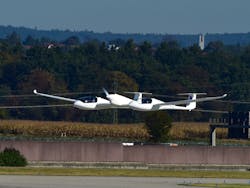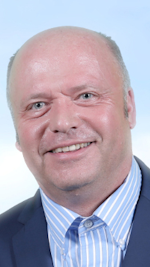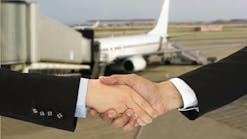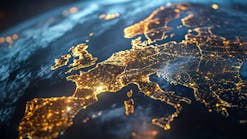HY4: Maiden Flight of the Hydrogen Powered Airplane
A new milestone in emission-free powered flight was achieved on 29th September with the maiden-flight by the HY4, four-seat airplane, powered by hydrogen fuel cells. The HY4 aircraft took off from Stuttgart airport in Germany on its first official flight and stayed airborne approximately 10 minutes where it has flown one traffic-pattern. The HY4 is the world’s first four-seat, passenger aircraft whose electric motor was powered by electric energy generated solely by a hydrogen fuel cell system. Researchers from the DLR Institute of Engineering Thermodynamics, from the German Aerospace Center (Deutsches Zentrum für Luft- und Raumfahrt) developed the aircraft's powertrain and worked on the project with industry and research partners like Pipistrel (the airplane airframe), H2FLY, The University of Ulm/Germany and the Airport Stuttgart.
The DLR researchers developed the Hydrogenics fuel cell hydrogen fuel cell power train and installed it in the aircraft. The used aircraft was built by Slovenian airplane manufacturer Pipistrel and is of same type like the aircraft, that has won the NASA Green Flight Challenge in 2011. It consists of two Pipistrel Taurus G4 motor-glider fuselages, each with the capability of two occupants, connected by a common mid-wing section on top of which the propulsion unit is located. It consists of 80 kW (approx. 104 HP) electric motor with propeller in front and three low temperature, hydrogen fuel cells behind. The hydrogen is carried in two high-pressure tanks, made of carbon-fiber, located in each of two fuselages, just aft of the passengers cabin. The auxiliary battery pack is located aft of those hydrogen tanks and just behind the occupants.
The used fuel, the hydrogen, is stored in hi-pressure hydrogen tanks at a pressure of 4.300-5.800 PSI (300-400 bar); after pressure reduction to 100PSI (7 Bar), hydrogen is fed to low temperature, fuel-cells in the engine pod. The only waste product from this process is water. On board of the HY4 is a high-performance lithium battery pack which covers peak power loads during take-off and climb. It can be used even as a back-up energy system in case of the failure of the hydrogen system, giving the airplane 15 minutes endurance.
If the hydrogen required for the fuel cell is generated via electrolysis using power from renewable energy sources, the HY4 can fly without generating any emissions at all. The aircraft is operated by the DLR spin-off H2FLY.
The HY4 which derives from a Pipistrel motor-glider, flies with a maximum level speed of approximately 110kts (200 km/h) and a cruises at 80kts (145 km/h) at MTOW of 3300 pounds (1500kg). Depending on speed, altitude and load, HY4 range is from 460 to 930 miles (750 to 1500 kilometers). The most striking feature of the HY4 are two fuselages, each with space for two passengers.
Josef Kallo, responsible for the HY4 project at DLR and a Professor at the University of Ulm says: "With the HY4, we now have an optimal platform to continue developing the use of fuel cells on aircraft," adding that "Small passenger aircraft, such as the HY4, could soon be used in regional transport as electric air taxis and offer a flexible and rapid alternative to existing means of transport." According to Kallo it is only a question of time when an aircraft with capacity of 6-10 passengers will transport passengers over distances of 600 mls at 190 mph. Kallo said that calculations have shown that 40-seater aircraft are technically feasible which could carry passengers over 600 miles on speeds over 250 miles per hour.





